#65 Ford Mustang 289
Explore tagged Tumblr posts
Text
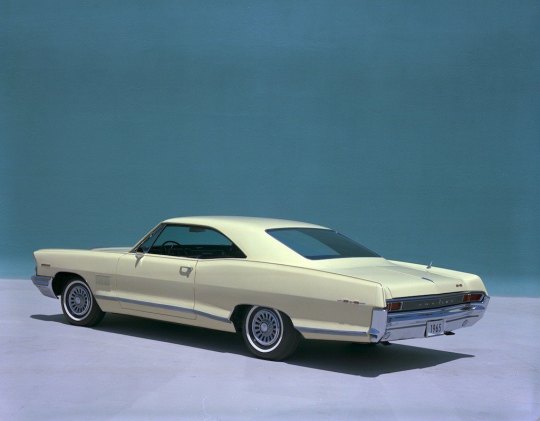
10 Forgotten Muscle Cars That Deserve to Be Restored
by James Derek Sapienza
Source: General Motors We all know the story; it started in 1964 with the Ford Mustang. No, wait — I mean the Plymouth Barracuda. Or the Pontiac GTO. Or was it earlier with the Pontiac Catalina SD? The ’50s Dodge D-500 maybe? Debating the origin of the muscle car is like debating over the first rock and roll record; everyone you talk to has a different opinion, and no one is exactly wrong. Let’s just say that by the early ’60s, a generation coming of age fell in love with high-performance midsize cars coming out of Detroit, and for a few brief years, performance ruled the day. Naturally, the good old days seem to look better with each passing year, and as the book was written on the muscle car, a fair amount of contenders fell by the wayside.

1. 1964 Studebaker Avanti R3
Source: Auctions America The Avanti isn’t generally counted among muscle cars, but then, Studebaker was never exactly considered a performance powerhouse to begin with. But the fiberglass Avanti had a long hood, short rear deck, and 289-cubic-inch V8 a full two years before the Ford Mustang did. In 1964 (after production officially ended), Studebaker bored out nine V8s to 304 cubic inches, slapped a Paxton supercharger on them, and dropped them into remaining Avantis. The result was a 171-mile-per-hour rocket, which the company claimed made it the fastest production car in America. This R3 was sold by Auctions America in 2010 for $96,250. With the collector market being what it is today, good luck finding one this cheap ever again.
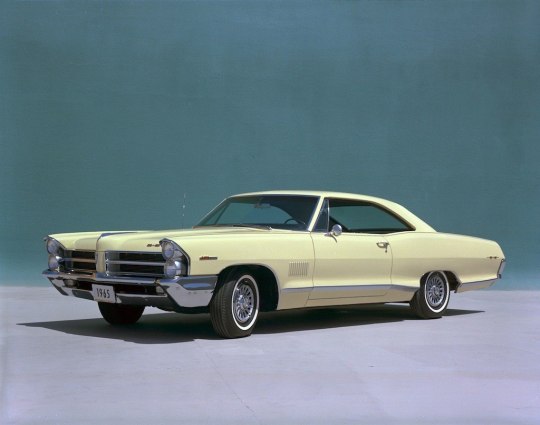
2. 1965 Pontiac 2+2
Source: General Motors As far as classic muscle cars go, the ’65-’67 GTO is remembered to be about as big as they came. But with the success of the GTO, Pontiac wanted to take its go-fast formula to an even bigger car, which became the ’65-’67 2+2. Based on the full-size Catalina two-door, the 2+2 had its own unique 338-horsepower 421-cubic-inch V8, and in High Output guise, power jumped to 376 ponies, which when tuned right could rocket from zero to 60 in a mind-bending 3.9 seconds. Bigger, plusher, and often faster than its smaller stablemate, the 2+2 deserves a lot more love from speed freaks.

3. 1964 Mercury Comet Cyclone
Source: Ford For ’60s Ford products, the Mercury Comet was about as basic as they came. Closely based on the Ford Falcon, the ’64-’65 Comet could be livened up with Ford’s famous 289-cubic-inch V8. But for those who wanted more from their Mercurys, Ford built 50 Comet Cyclones for the dragstrip, complete with fiberglass hood, fenders, doors and front bumper, plexiglass windows, and the same 425-horsepower 427 V8 found in the Shelby Cobra. In ’66, Mercury introduced the production Comet GT with the 390 V8, and while they’re capable compact muscle cars, they couldn’t hope to match the insanity of their big block predecessor.

4. 1968 Ford Ranchero 500
Source: Ford It’s been long overshadowed by Chevy’s iconic El Camino, but the Ford Ranchero was America’s first car-based Ute. And while Chevy was offering the 396 V8 in its muscle trucks, Ford upped the ante in ’68 and made its restyled Ranchero available with a 335-horsepower Cobra Jet 428 V8. Unfortunately, a lack of weight over the rear wheels made the hot Rancheros a handful to drive, so very few were built with Ford’s biggest motor. While it seems like every surviving El Camino happens to be an SS model, we can’t remember the last time we’ve seen a Cobra Jet Ranchero. Come to think of it, we can’t remember the last time we’ve seen any Ranchero.

5. 1969 Chevy Kingswood 427
Source: General Motors Back in the ’60s, you could order virtually any option you wanted on a car, and companies would actually build it for you. So imagine you’ve got a growing family, and your Corvette just can’t handle them. What to do? Buy a Chevy Kingswood station wagon with Rally wheels, hideaway headlights, seating for seven, and the same 390-horsepower V8 found in your ‘Vette. Only 546 buyers opted for the big V8 in ’69, but a number of 427 Kingswoods spent the next decade making their mark on the drag strip.

6. 1969 Oldsmobile Rallye 350
Source: General Motors When gearheads think of outrageous muscle cars from 1969, the Pontiac GTO Judge easily sits at the top of the list. But while the Judge has gone on to become a legend, Oldsmobile’s analog, the Rallye 350, is all but forgotten. Like the Judge (at least at first) it was offered in one outrageous color (Sebring Yellow), had color-matched wheels and bumpers, a spoiler, and a fiberglass hood. And compared to Olds’s top-dog 442, the car’s 310-horsepower 350-cubic-inch V8 made it significantly lighter, allowing it to scramble from zero to 60 in seven seconds and run the quarter mile in a respectable 15.27 seconds at 97 miles per hour. Just 3,500 Rallye 350s were built, making it one of the more obscure muscle cars to ever come from GM.
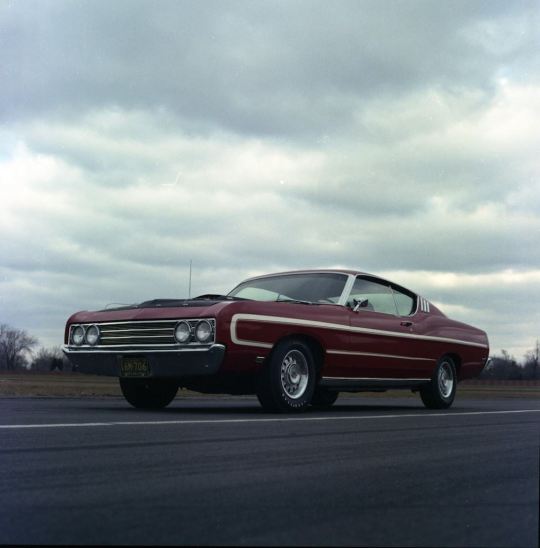
7. 1969 Ford Torino Talladega
Source: Ford Half a century on, the Plymouth Roadrunner Superbird and Dodge Daytona get all the love when it comes to NASCAR homologation specials. But in 1969, Ford tried its hand at aerodynamics too and built the Torino Talladega. Starting with a Torino Sportsroof, Ford worked with the Holman-Moody race shop to design a sleeker, longer front clip and rear fascia for the car. The Talladega was honed in the wind tunnel — a relative novelty for the era — and powered by the 429-cubic-inch V8 found in the Boss Mustang. Production was over by March; Ford only built 754 of them and they were barely advertised, but the slippery cars dominated during the ’69 season, winning 29 races. In 1970, however, the 200-mile-per-hour Superbird ruled NASCAR, and the Talladega’s time in the spotlight was over. Today, the Talladega (and near-identical Mercury Cyclone Spoiler II) are bargains on the collector market compared to the beak-nosed Mopars.
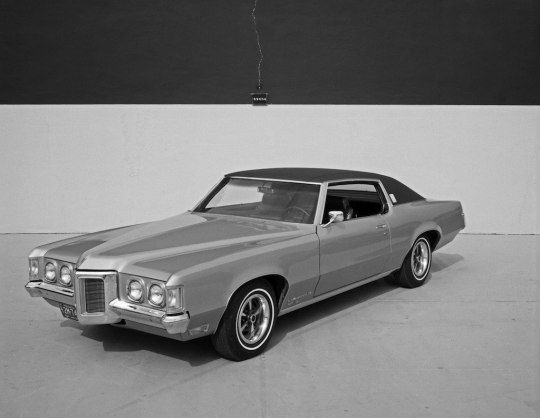
8. 1969 Pontiac Grand Prix SJ
Source: General Motors The second-generation Grand Prix is largely remembered for its role in popularizing the Personal Luxury Coupe segment, but in its early days, it was one of the hottest cars on the street. With a long hood (the longest hood of any production car in ’69, in fact) and short deck, the Grand Prix was available with Pontiac’s 390-horsepower 428-cubic-inch V8, allowing it to scramble from zero to 60 in 6.5 seconds and run the quarter mile in 15 seconds at 97 miles per hour. Its combination of luxury and power made it the Grand Prix massive hit for Pontiac; within a few years, any semblance of performance would be gone.
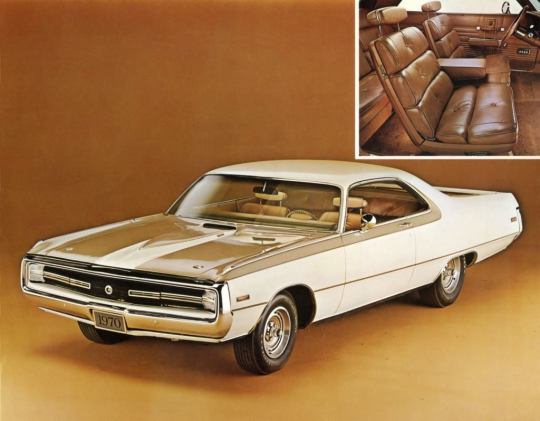
9. 1970 Chrysler Hurst 300
Source: Fiat Chrysler Automobiles As early as 1970, Chrysler die-hards were feeling nostalgic for the 300-letter series, which ended in 1965. The 300-series carried on, but performance had taken a back seat as mid-sized muscle cars had picked up the go-fast mantle. Chrysler tried to recapture the magic for ’70 by outfitting a 300 coupe with the interior from an Imperial, a fiberglass hood and decklid, a 375-horsepower 440-cubic-inch V8, and a Torque-Flite automatic to handle all that power. At 18.5 feet long and 4,400 pounds, the big Chrysler could still make zero to 60 in 7.1 seconds and run the quarter mile in 15.3 seconds. With just 500 built, the Hurst 300s rank as one of the rarest Mopar muscle cars of all time.
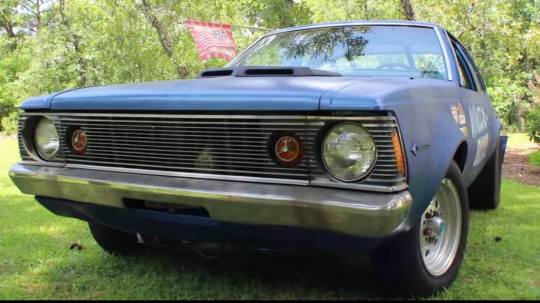
10. 1971 AMC SC/360 Hornet
Source: Chris Andrews Productions via YouTube In the ’60s, AMC’s red, white, and blue Rebel Machine and SC/Rambler muscle cars failed to move the sales needle for America’s last independent automaker, but they sure caused a scene wherever they went. For 1970, the company had introduced the compact Hornet and Gremlin to replace the Rambler, and with them came the SC/360 Hornet. With an available 285-horsepower 360-cubic-inch V8 under the hood, the small Hornet could hit 60 from a standstill in 6.7 seconds, and run the quarter mile in 14.9 seconds at 97 miles per hour. But in 1970, displacement still ruled the day, and despite being cheaper than a Plymouth Duster 340, AMC found just 784 buyers for its smallest muscle car. We think it’s aged remarkably well, and would love to take one of these ’70s-era sleepers to the drag strip.
#car#cars#muscle car#mopar#american muscle#dodge#ford#chevrolet#chevy#amc#american motors#pontiac#pontiac grand prix#chrysler#hurst#olds#oldsmobile#studebaker#automobile#auto#coupe#Mercury
194 notes
·
View notes
Photo
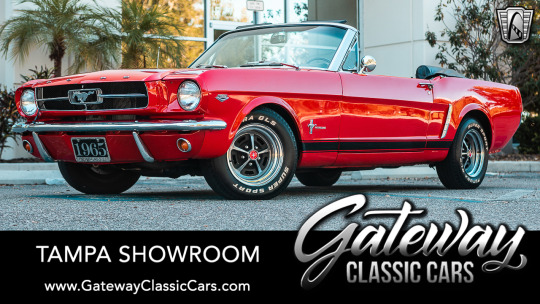
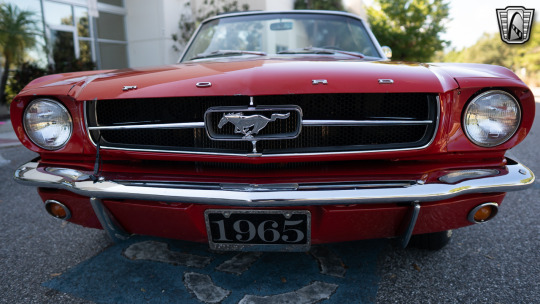




Featured for sale in our Tampa Florida showroom is this sharp 1965 Ford Mustang Convertible. This eye catching 65 Mustang is powered by a rebuilt 289 CID V8 that is mated to a rebuilt 3 speed automatic transmission. The rebuilt was completed about 9,000 miles ago and it still runs strong. Notable features under the hood would include the Holley Terminator EFI carburetor system, Cobra valve covers, and even the electronic power steering. The exterior is finished in a Dupont Red with black accent decals down the side, a black power soft convertible top, and finished off with sport wheels wrapped in radial raised white letter tires. See more here....
#cars#classic car#classiccars#classic cars#antique#vintage#cool cars#vintage auto#vintage cars#pony#mustang#ford#ford mustang#cruisinglife#convertible#classic mustang#style#autoporn#carporn
11 notes
·
View notes
Photo

65 Ford Mustang Fastback 289
0 notes
Photo
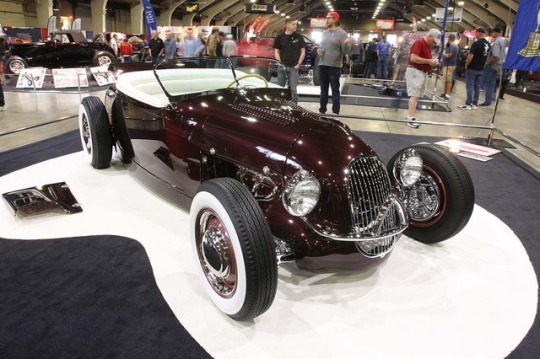
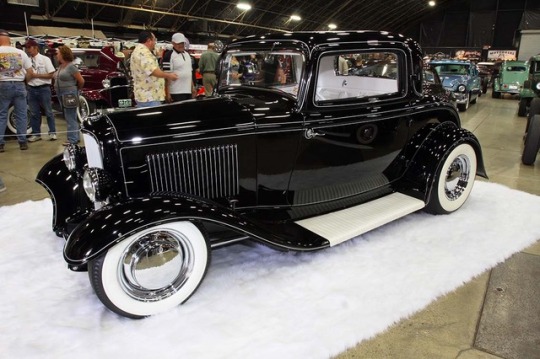
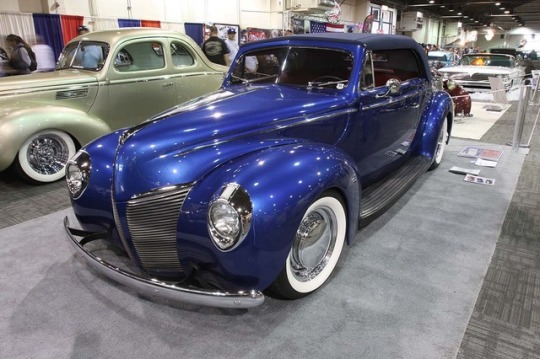
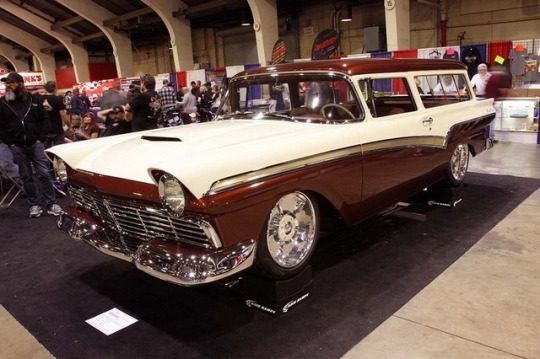
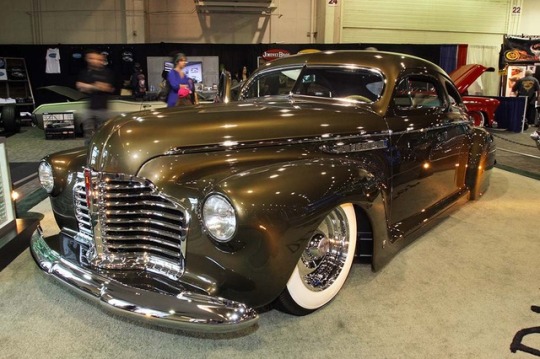
2018 Grand National Roadster Show Top 100 Winners:
1. 1929 Ford Roadster James BobowskiOrange, California
A historical influence was strong among the America’s Most Beautiful Roadster contenders, with James’ ’29 Model An as the most historical. The famous Eddie Dye roadster has been lost, found, parted out, and rotated through many owners and styles since the Ayala Brothers built it for Eddie almost 70 years ago. Jimmy White and his Circle City Hot Rods team restored the roadster, using many original parts, like the Whitey Clayton nose and hood, and reproducing others, like the belly pan and Crestliner wheel. The Evans Engineering Flathead, Cherry Orchid paint, Ford and Merc hubcaps, and Chris Plant’s recreated white pleated upholstery help bring 1952 into 2018.
2...1932 Ford Coupe Bret Sukert Montesano, WA.
This ’32 three-window got our attention as soon as we entered the Suede Palace. Bret’s ‘60s-style hot rod is built from an unmodified original steel body bought from well-known rodder Dick Page. Foss’s Hot Rods handled body and paint chores; Mitch Kim did all that ’striping. The suspension includes a dropped axle and transverse leafs in front and quarter ellipticals in back. The Chevy small-block is topped with a Weiand manifold and ’65-’66 GTO air cleaner. Interior elements include Mopar van seats, an N.O.S. Grant wheel, a restored Ha-Dees Stewart Warner blue face gauges (it took 50 gauges to get eight that matched). The coupe left the Suede Palace with the Best of Show award.
3...1940 Ford Convertible Tony Miller San Pedro,
CA Tony says that ’40 Fords don’t need any styling help, but he made an exception with this one by guillotining a standard coupe and adding a post-War-style top with quarter windows. At Don Dillard’s Highway 99 Hot Rods the hood and quarters were sectioned, front wheels moved forward, body channeled, doors stretched, trunk shortened, and many other mods were made, including a handmade ’40 Merc grille, ’39 trim, ’41 Stude taillights, and ‘40 Merc rear bumper. A Plymouth speedo and ’40 Ford instruments fill the dash facing Sid Chavers’ red leather interior. A 4V 289 Ford is tied to an AOD trans. The only unmodified parts are the front bumper, running boards, and headlight rings.
4...1957 Ford Del Rio Ranch Wagon
Robert Florine Ventura, CA Growing up around wagons stirred Robert’s interest. He wanted a Ford because there is already an abundance of Chevys—plus he wanted a car he could put a shotgun motor in. Working with Steve Strope and crew at Pure Vision yielded this result. The profile was altered with a slanted B-pillar and 4 3/4-inch door stretch (with ’57 T-Bird handles) to improve proportions. An Art Morrison Enterprises chassis with C6 front suspension parts and Mike Meyer Racing rear torque arms, and JRI coilovers beef up the undercarriage. The engine is a Kaase Boss 9 with Borla 8-stack induction. The custom interior is matched in great taste by the Bridgewater Bronze and Avorio two-tone paint.
5...1941 Buick
Clifford Mattis.Vacaville,
CA Clifford and builder Marcos Garcia from Lucky 7 Customs have teamed up on many vehicles, but never a true custom—until now. A chopped top, handmade flush skirts, and taillights are just a few of the custom mods covering the Buick. The chassis combines a Mustang II frontend and a four-link rear, with air bags to drop the car. Power comes from a carbed Chevy 350 and 700R4 trans. One-off EVOD wheels (with simulated Caddy caps) roll with Coker Firestones. The vintage style interior features a Dennis Crook wheel, New Vintage USA gauges, and patterned cloth inserts in the leather upholstery. It took 20 spray-outs to get the perfect dark olive paint color, but the final result is stunning. Even More..RK Motors
SOURCE: STREET RODDER
AUTHOR: Tim Bernsau
#bucik#ford roadster#ford wagon#ford convertible#ford coupe#roadster show#art exibition#motor show#vintage car#ford#cheverolet#mercedes#bmw#old cars#classic car
72 notes
·
View notes
Photo

Ford Mustang 289 Hardtop '65 🇺🇸 . . . . . . . #ford #fordmustang #mustang #fordlove #mustangfanclub #mustangnation #mustanglife #mustangclub #musclecar #americanmuscle #clasiccars #classiccarsdaily https://www.instagram.com/p/CS-gIvTrIJ_/?utm_medium=tumblr
#ford#fordmustang#mustang#fordlove#mustangfanclub#mustangnation#mustanglife#mustangclub#musclecar#americanmuscle#clasiccars#classiccarsdaily
0 notes
Text
La Mustang GT cabriolet 2020
Le 23 septembre 2020
Il y a un peu plus de 55 ans de cela, le constructeur américain Ford lançait une voiture très abordable aux allures sportives sur notre marché, la Mustang. À ses débuts, cette auto proposée en coupé et en cabriolet reposait sur la plateforme de la «vulgaire» Falcon, l’auto la plus petite et la plus économique que Ford offrait alors à sa clientèle. Il n’en fallait pas plus pour que les amateurs de sensations au volant acceptent la Mustang comme une véritable sportive, au même titre que les «véritables» sportives européennes et surtout en la préférant aux tellement coûteuses Chevrolet Corvette. Rapidement, les préparateurs tant britanniques, européens qu’américains se rendirent compte que modifier une Mustang (qui, éventuellement allait aussi être proposée en coupé à toit profilé) étant d’une grande simplicité et ainsi ils en créèrent une véritable auto de compétition tant en circuit routier local ou international, voire même en stock car, en accélération et autres. Avec le temps, la Mustang s’est acquise toute une réputation autour du globe et l’auto est passée de petite sportive abordable à voiture de grand tourisme de calibre international.

L’emblème actuel à l’intérieur des Mustang. (Photo Éric Descarries)
Si vous avez un peu de connaissances techniques et que vous comparez une Mustang des années soixante au cabriolet GT dont il est question dans ce reportage, vous constaterez une incroyable évolution. Il n’est plus question de la simplicité des éléments mécaniques de base de la Falcon (petit V8, boîte manuelle à quatre rapports ou auto à trois rapports, pont arrière rigide). Dans mon cas, j’ai été «élevé» dans ce type de mécanique que je pouvais entretenir, réparer ou modifier alors qu’aujourd’hui, je ne m’y reconnais plus! Évidemment, alors qu’une Mustang de l’époque se vendait à un prix presque équivalent à celui d’une berline conventionnelle, celles d’aujourd’hui affichent un prix qui dépasse…tout entendement. Par exemple, que diriez-vous d’un cabrio à plus de 65 000 $!

Le cabriolet Mustang GT qui me fut prêté par Ford devant une des dernières images de l’été à mon endroit de photos préféré. (Photo Éric Descarries)
La GT qui m’a été confiée par Ford n’a, pour ainsi dire, rien de spécial à proposer pour l’année 2020. Elle est presque identique à celle de 2019. Toutefois, sachez qu’au cours des prochains mois, elle deviendra la seule automobile (au sens propre du mot) au catalogue de Ford (les autres produits de Ford en Amérique seront des VUS et des VUM). Et on en attend aussi une variante VUM à moteur électrique…

Le cabrio GT vu de l’arrière au légendaire Commodore Yacht Club de Laval. (Photo Éric Descarries)
Revenons à nos moutons. Bien entendu, la Mustang n’est plus une auto «ordinaire». Il n’est plus question d’une simple «compacte» transformée en sportive. L’actuelle Mustang repose sur sa propre plateforme qui conserve la propulsion mais qui se distingue par des éléments de suspension indépendante qui lui permettent de rivaliser avec ce qui se fait de mieux un peu partout dans le monde. Ceci n’est pas une opinion mais un fait qui est prouvé par les nombreuses victoires des Mustang presque de production en compétition semant ainsi des voitures européennes et asiatiques de grande renommée.
La Mustang GT est mue par un «traditionnel» V8 de 5,0 litres qui n’a plus besoin de présentation. Il est désormais une référence dans le domaine de la performance. Dans sa version de 2020, ce moteur développe pas moins de 460 chevaux et cela, sans turbocompresseur ou compresseur mécanique. Notons que la Mustang de «base» est livrée avec un moteur EcoBoost à quatre cylindres de 2,3 litres qui est encore plus puissant (à 330 chevaux) que dans le passé mais celui-ci n’est livrable qu’avec le coupé. La Mustang cabrio a le droit au quatre cylindres mais celui de 310 chevaux. La GT vient avec le V8. Deux boîtes de vitesses sont au catalogue, la manuelle à six vitesses (que, personnellement, je préfère) et l’automatique à 10 rapports. Cette dernière s’est toutefois avérée plus rapide aux mains de pilotes professionnels surtout que ses passages peuvent être faits par les palettes au volant! Il est possible de manier les rapports autant en passant les vitesses qu’en rétrogradant mais la majorité des utilisateurs préfèrent laisser la boîte auto faire son travail. Il faut dire qu’à un prix dépassant les 50 000 $, la plupart des propriétaires ne sont plus des jeunes! Le pont arrière est désormais indépendant (depuis l’arrivée de la dernière génération) ce qui confère à cette imposante auto une tenue de route respectable (surtout qu’elle est appuyée de pneus Pirelli P255/40R19 ultra performants). Le puissant freinage est à disques tout le tour alors que la direction avec assistance électrique peut être «modulée» selon le choix de mode de conduite choisi par le conducteur. Car le cabriolet GT que vous voyez ici en photos comportait une commande qui permettait au conducteur de choisir son mode de conduite qu’il fut Normal, Sport, Track, Accélération ou Neige/Glace. De plus, il y avait aussi une commande qui permettait de rendre la direction plus ferme pour plus de précision. Décrire toutes les innovations techniques qui peuvent permettre au conducteur de faire de sa GT un véritable bolide de course exigerait des pages d’explication…

Le seul V8 disponible dans la GT, le Coyote de 5,0 litres qui fait rien de moins que 460 chevaux. Le compartiment moteur est nettement plus occupé aujourd’hui qu’il pouvait ne l’être à l’époque des 289 des débuts de la marque… (Photo Éric Descarries)
Outre sa ligne facilement reconnaissable et une silhouette devenue presque légendaire, la Mustang propose un intérieur au design remarquable qui, avouons-le, est plus accueillant que celui de sa rivale du passé, la Chevrolet Camaro. C’est d’ailleurs ce qui aura le plus nui à cette autre auto de performance du même segment. On est bien dans une Mustang, aussi bien que dans la très spacieuse Dodge Challenger (qui, malheureusement, n’est pas disponible en cabriolet). Le tableau de bord (dont l’instrumentation «vidéo» variera selon le mode de conduite ou de «pilotage» choisi) reproduit le thème de celui des anciennes Mustang. Les sièges d’avant sont très confortables et, curieusement, ceux d’arrière ne sont pas si mal non plus. Mais ce qui plaît le plus aux amateurs de voitures de ce gabarit, c’est la visibilité que procurent les grandes glaces de la Mustang contrairement à celles de la Camaro, voire même de la Challenger. Autre point positif, le coffre de la Mustang, même dans sa version cabriolet, est très utilisable. Il n’est pas aussi logeable que celui de la Challenger mais nettement supérieur à celui de la Camaro.

Un des choix de base d’instrumentation de la Mustang GT. (Photo Éric Descarries)

Un second choix pour la piste…(Photo Éric Descarries)

Et celui des pistes d’accélération. (Photo Éric Descarries)

Les places avant de la Mustang GT sont toujours invitantes. (Photo Éric Descarries)

À l’arrière, c’est un peu plus serré mais, pour un cabriolet, c’est pas si mal, surtout pour des enfants qui verront quand même bien à l’extérieur grâce à la position élevés des coussins. (Photo Éric Descarries)

Le coffre est quand même utile mais si vous optez pour la sonorisation optionnelle, le haut-parleur des graves viendra y voler un espace essentiel. (Photo Éric Descarries)
Sur la route
Très souvent, à ce temps-ci de l’année, j’aime bien voyager dans le Maine (la température est très souvent des plus agréables dans cet état de la Nouvelle-Angleterre en septembre) et le cabriolet Mustang est le véhicule tout indiqué pour ce genre de «road trip». Mais vous aurez compris qu’avec la situation actuelle, ce ne fut pas possible. Je me suis donc «promené» dans la région montréalaise abaissant la capote aussi souvent que possible (un peu de chauffage aidant…). Abaisser le toit est un jeu d’enfant. Il ne suffisait que de tourner la poignée centrale au-dessus du pare-brise et de presser la commande électrique. Il faut noter ici que cette capote est nettement supérieure à celle des Mustang du passé avec une toile plus épaisse encore plus isolée du bruit et des éléments extérieurs. Évidemment, la lunette arrière est de verre.
La Mustang GT peut être conduite comme une voiture urbaine très docile mais lorsqu’on veut en exploiter la puissance, il n’y a qu’à presser l’accélérateur. Passer du point mort à 100 km/h peut demander moins de six secondes selon l’adresse du conducteur. L’antipatinage est un des atouts de cette voiture (il est très utile en hiver si vous tenez à conduire une GT dans la neige, ce que j’ai fait sans trop de peine grâce à mon expérience passée!) et il sert aux vives accélérations même en mode Accélération (si vous rêvez de courir sur une «drag strip» les weekends!). Mais les reprises sont vraiment rassurantes alors que l’instrumentation peut montrer au conducteur en quel rapport la boîte de vitesse opère!). La tenue de route est remarquable pour une voiture de presque 4000 livres et, si la route est bonne, il n’y a qu’à choisir le mode de conduite Sport ou Sport + pour l’améliorer avec plus de fermeté. À ce moment-là, les échappements laisseront passer plus de son du V8 ce qui sera toujours plus plaisant aux oreilles de l’amateur de telles autos. Inutile de vous dire quelle serait la vitesse maximale que cette auto pourrait atteindre et essayer de l’atteindre ne serait un bon conseil. Mais que ce serait grisant! Qu’importe, la Mustang GT demeure une des autos les plus excitantes à conduire sur le marché.
Lorsqu’il est question du V8, le premier commentaire que l’on entend des critiques et des observateurs, c’est que le véhicule doit être «gourmand». En fait, durant ma semaine au volant de cet icône de l’industrie automobile américaine, j’ai obtenu une moyenne de 14,5 l./100 km en situation surtout urbaine avec quelques pointes…d’exagération au volant. Ce qui a encore une fois dénoncé le trop petit réservoir de carburant de l’auto. Celui-ci pourrait être suffisant sur autoroute (comme j’ai pu le vivre dans le passé) mais c’est un peu agaçant en ville.
Si les premières Mustang d’il y a cinquante-cinq ans étaient plutôt abordables (ce qui a permis à Ford d’en vendre autour de 400 000 lors de sa première année de production alors qu’aujourd’hui, on en est à environ le quart), celles d’aujourd’hui peuvent s’avérer assez coûteuses. Un coupé de base à moteur EcoBoost demeure abordable à un peu plus de 31 000 $ mais aussitôt que l’on choisit un cabriolet GT Premium, ce prix passe à 53 805 $. Il fallait ajouter à ma voiture de base les 100 $ de la taxe d’accise fédérale pour le climatiseur, 500 $ pour la peinture rouge, 2100 $ pour l’équipement du Groupe 401A incluant le système de navigation et les avertisseurs de circulation latérale, les 1600 $ du groupe d’apparence noire dont les jantes de 19 pouces, les 1500 $ du régulateur de vitesse adaptatif, les 1750 $ de la boîte automatique optionnelle à 10 rapports, les 500 $ pour le pont arrière à glissement limité avec rapport 3,55 :1, 1000 $ pour le modulateur de son des échappements, les 200 $ du mini pneu de secours et les 1000 $ pour la radio avec sonorisation Bang & Olufsen (incluant un haut-parleur de graves qui prend de la place dans le coffre). Ajoutons à cela les 1750 $ de frais de transport et livraison et on en arrive à un grand total de 65 805 $...plus taxes.
Le prix peut sembler élevé mais c’est ce qu’il faut payer pour mettre la main sur un véhicule qui est de plus en plus considéré comme exceptionnel. Et, si je me fie à la quantité d’observateurs qui se sont retournés à son passage et aux multiples remarques positives des gens que j’ai rencontré, c’est vraiment une voiture exceptionnelle. On est loin des petits cabrios des années soixante, croyez-moi!
0 notes
Photo

You’ll hear a great deal about the #FordBronco today, since @Ford will launch the new #Bronco in just a few hours. The new truck is patterned on the original 1966-77 Bronco, and you can read a full history of that truck at OldMotors.net (or go to bit.ly/3fprniH) if you want to know more about the origins of Ford’s offroad pony. The original Bronco was in development during the wildly successful launch of the first Mustang, and it was created by some of the very same product planners, including Don Frey. When it was new, it advanced the "car like" trends brought to off-road vehicles initiated (and inspired) by the 1961 International Scout. As time went on though, newer SUVs became even more car-like (or, more accurately, pickup-like). By the end of its run, the #mk1Bronco was considered a “hard core” offroader and still is. After noticing the Scout and how much it boosted the overall market for such vehicles (it tripled from 1960 to 1962), Frey's team embarked on a long survey of offroaders, determining what they wanted out of their trucks, after which he and Lee Iacocca made their case for building such a truck. The project was greenlit in Feb. 1964 - but only given a $10M budget. Truck engineer Paul Axelrad led the team that developed the Bronco's 152" (386cm) and 92" (234cm) wheelbase structure, complete with a new "mono-beam" suspension broadly similar to the upcoming "twin I-beam" setup of the ‘65 F-series. Early Broncos were all sixes, but in early 1966 the 289 V8 was added, becoming the most popular engine. Three bodies - wagon, pickup, and Roadster, were built, with early trucks coming from Budd in Pennsylvania, who'd also built the prototypes. The Bronco was a hit in its first year but was never a huge seller - but Ford gradually improved it year after year, with the biggest changes happening in the early 1970s, a macho-looking "sport" model, an automatic, better brakes, etc. Chevy countered with the pickup-based Blazer in 1969, but Ford stayed true to the original Bronco into 1977. With many customized Mk1 Broncos out there and surging interest in the trucks in the last 15 years, it’s no surprise Ford’s new Bronco looks to the Mk1 for inspiration. https://www.instagram.com/p/CClrLuYltnG/?igshid=1eh6674n3x12a
0 notes
Photo

SUPER SHARP 1965 MUSTANG COUPE WITH HERTZ GT 350H TRIM 289 AUTO PONY INTERIOR STRAIGHT BODY BEAUTIFUL RAVEN BLACK WITH GOLD STRIPES SHARP LOOKING MUSTANG WITH STRAIGHT METAL THAT RUNS AND DRIVES GREAT VERY SHARP BLACK AND GOLD PAINT SCHEME HERTZ GT350H TRIM ELEANOR STYLE HOOD SCOOP SIDE SCOOPS GT TAIL PANEL FOG LIGHTS BLACK PONY INTERIOR STRONG SMOOTH 289 ENGINE WITH 4BBL CARB C4 AUTOMATIC TRANSMISSION DUAL EXHAUST ALL WAY BACK OUT GT TAIL PANEL WITH CORRECT TRUMPET TIPS DARK CENTER 5 SPOKE WHEELS AND PERFORMANCE TIRES EXCELLENT LOOK AND STANCE! EASY STARTING SMOOTH 289 4BBL ENGINE PERFORMANCE ALUMINUM INTAKE NEW TUNED HOLLEY 4BBL CARBURETOR PERFORMANCE HEADERS DUAL EXHAUST ALL WAY OUT BACK THRU GT TAIL PANEL WITH CORRECT TRUMPET EXHAUST TIPS SMOOTH SHIFTING C-4 AUTOMATIC TRANS NICE B&M SHIFTER…WORKS GREAT FACTORY FORD REAREND WITH 3.25 GEARS NICE 2 KNOB MUSTANG RADIO CURRENTLY INSTALLED BEAUTIFUL FACTORY CORRECT BLACK INTERIOR NCIE FRONT AND REAR BLACK PONY SEAT COVERS NICE BLACK DOOR PANELS NICE BLACK CARPET NICE FRONT SEAT BELTS NICE CHROME DASH BEZEL NICE DASH PAD NICE NEW GT STEERING WHEEL NICE WEATHER STRIPPING NICE CHROME BUMPERS AND TRIM AND EMBLEMS SHARP DARK CENTER 5 SPOKE WHEELS WITH PERFORMANCE TIRES EXCELLENT LOOK AND STANCE SOLID NICE TRUNK PAINTED BLACK DETAILED WITH MAT STRAIGHT AND SOLID BODY…..GREAT FIT AND GAPS..…DOORS, HOOD AND TRUNK OPEN AND CLOSE GREAT NICE BEAUTIFUL RAVEN BLACK PAINT WITH GOLD STRIPES….. BUFFED SMOOTH…..VERY DEEP COLOR AND DEEP SHINE..FEW MINOR TOUCHUPS……OVERALL PAINT LOOKS GOOD AND SHARP EXCELLENT MUSTANG COUPE COLOR COMBO……BLACK AND GOLD WITH PONY INTERIOR THIS IS A NICE LITTLE 65 MUSTANG COUPE WITH HERTZ GT35OH TRIM. NICE RUNNING 289 4BBL ENGINE AND C4 AUTO TRANSMISSION. NICE BLACK PONY INTERIOR. GORGEOUS COLOR COMBO BLACK & GOLD! THE LIGHTS, DASH LIGHTS, GAUGES, SPEEDOMETER, TURN SIGNALS AND WIPERS ALL WORK AS THEY SHOULD.......... NICE MUSTANG READY TO ENJOY 847-848-1850 #mustangsforsale 100% Financing is available Price is set at $26,500.00 Monthly Payment: $379.42 to $399.18 Interest rate / APR: 5.39% to 6.94% (Exact rate within this range https://www.instagram.com/p/B-nx9U3psWH/?igshid=1xd051q9w1tnj
0 notes
Text
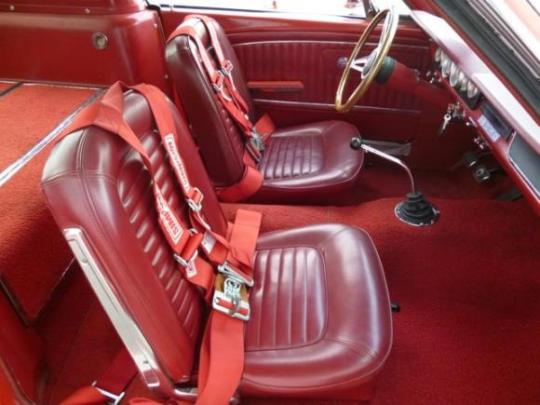
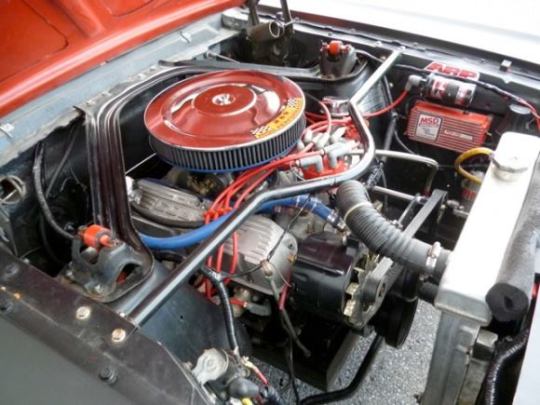
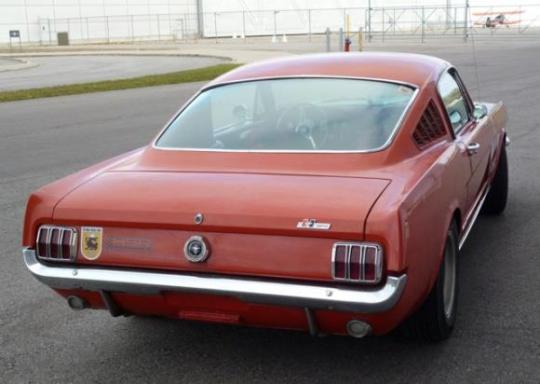
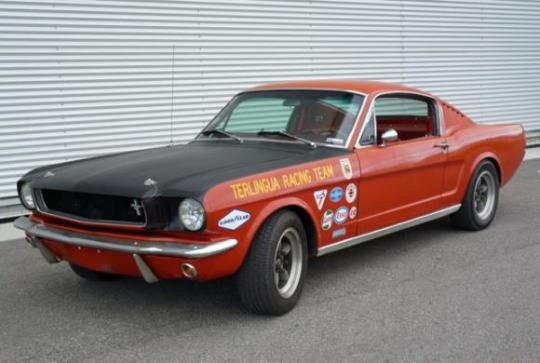
This 1965 Ford Mustang fastback (Chassis 5T09A146475) is built for spirited road performance with a Terlingua paint scheme found much less often than the Shelby stripes commonly seen on modified fastbacks. The build sheet is impressive, with a dyno-tuned 302, Tremec 5-speed, 4-wheel disk brakes, Cobra Automotive suspension, and a stiffened unibody. The original A-code 289 and 4-speed transmission are included (needing rebuild), and the car is a turn-key driver with a aged patina that makes it perfect for road events
This car was originally delivered to the state of Florida and discovered in North Carolina wearing its original time-faded body panels and interior. The seller says that the car is amazingly fun to drive, partially because there is no power steering, power brakes, A/C, or radio. We had the same list in our ’65 fastback, and so did the ’65 Shelby cars before they were softened in ’66, and wouldn’t do otherwise if we have one again. Mechanical enhancements from Cobra Automotive are as follows: ■Big spindle kit w/larger bearings (as per the Trans Am cars) ■Billet aluminum racing hub kit ■Deep Trans-Am lug nuts ■Rollerized coil spring pivots ■Road race coil springs (600 lb. with polyurethane spring insulators) ■Koni adjustable shock absorbers w/Koni urethane bushings kit ■Competition front cross member (used on the Boss 302 Trans Am cars) ■Super duty tie rod end kit ■Quick steer kit w/frame pin and rollerized bearing kit w/idler arm pitman arm ■Competition master cylinder upgrade with stainless steel brake lines ■Adjustable brake proportioning valve ■Competition front & rear disc brakes ■Adjustable brake push rod ■Roller bearing steering kit ■Stage 1 Road Race Rear Suspension ■Shelby style under ride traction bars ■Lowering blocks (1 inch) ■Competition kill switch (battery) ■Rotunda racing mirrors ■GT 350 hood pin kit; Other upgrades include: ■Control Freak Suspension upper & lower control arm set ■Torque Thrust aluminum wheels ■Sub-frame connectors ■Heavy duty racing clutch ■1-inch competition front sway bar ■Halogen head lights (Tri-bar) ■LED tail lights ■Battery relocation to trunk ■Electrical rewire (Ron Francis Retro kit) ■Headlight wire mesh stone guards;
The engine was built on a 1992 302 roller block and was broken in on the dyno and tested at 300hp and 315 lb-ft of torque. It has 3000 miles since the rebuild at West Carleton Automotive in Ottawa, Canada, and was assembled in the style of the ’65 Shelby GT 350 with black painted block, Cobra valve covers, hi-po 14″ air cleaner assembly, and ceramic coated Tri-Y headers. Other details on the build include: ■Hot tank and mag tested parts ■Sonic inspection on block ■Align hone ■Pedestal rockers ■E303 roller cam ■Roller lifters ■Eagle connecting rods ■Speed Pro pistons ■Speed Pro oil pump and pick-up ■Clevite cam bearing set ■ARP fasteners ■True roller timing set ■MSD electronic distributor ■140 amp heavy duty alternator ■Heavy duty fuel pump ■K & N air filter ■Competition high capacity oil pan ■4 core aluminum radiator w/ electric fan ■Dual exhaust with Shelby type glass pack mufflers matching revs. There is also an alarm and kill switch installed
The car still features the original seats, headliner, and door panels, and is fully original apart from the new original style carpet and one arm rest. The fold-down rear seat remains intact and a quality wood steering wheel from Tony D. Branda has been added. The dash has the R-model instrument panel with AutoMeter tach, speedo, fuel, water temp, amp., oil pressure, and volts gauges, as well as a competition oil pressure warning light. The ’65 Shelby radio block-off plate means the driver gets to concentrate on matching revs. There is also an alarm and kill switch installed.
#1965 ford mustang#ford mustang#fordperformance#muscle car#classic cars#fastback mustang#pony car#american muscle
11 notes
·
View notes
Photo

Close up with the beautiful Emily and the beautiful ’65 Ford Mustang 289 Convertible from the Project Obscura 2020 shoot at the El Dorado Dry Lake Bed. Natural light shoot without OCF in the bright sunny desert. Model @emily.trosclair88 Thank you to the sponsors @hhcolorlab @nvu_imaging Special thanks to @salcincotta @meredithryncarz @sedetweiler @caseydittmer @michaelanthonyphotography #projectobscura2020 #projectobscura #projectobscuralasvegas #hhcolorlab #nvu_imaging #coloradosprignsphotographer #weddingphotographer #drylakebed #model #ocf #shuttermagazine #portraitphotographer #coloradophotographer #portraitoftheday #mesmerizing #sonya7riii #sony70200gm #lightroomcc2018 #luminar4 #fordmustang #65fordmustang #65fordmustangconvertible #red (at El Dorado Dry Lake Bed) https://www.instagram.com/p/B9ii7nbA0lb/?igshid=1lnu122hffp2w
#projectobscura2020#projectobscura#projectobscuralasvegas#hhcolorlab#nvu_imaging#coloradosprignsphotographer#weddingphotographer#drylakebed#model#ocf#shuttermagazine#portraitphotographer#coloradophotographer#portraitoftheday#mesmerizing#sonya7riii#sony70200gm#lightroomcc2018#luminar4#fordmustang#65fordmustang#65fordmustangconvertible#red
0 notes
Photo

1965 Ford Mustang Barn find 65 Mustang Convertible. 289 3 speed, all original paperwork Just for you $12500.00 http://rover.ebay.com/rover/1/711-53200-19255-0/1?ff3=2&toolid=10039&campid=m2&item=133244998647&vectorid=229466&lgeo=1
0 notes
Text
Ford Mustang 1965 Convertible For Sale
Ford Mustang 1965 Convertible For Sale

1965 ford mustang convertible 289 classic muscle car for sale in mi vanguard motor sales youtube

1965 ford mustang convertible

1965 ford mustang convertible 302 v8

Large picture of 65 mustang oopm

Large picture of 65 mustang mw85

1965 ford mustang convertible restored photo

Large picture of 65 mustang p5is

1965 ford mustang convertible original unrestored a code 4 speed arizona car photo

1965…
View On WordPress
0 notes
Photo

Here’s an update on @endlessmountainsvintagesaabjam project Ford Mustang, see Saab Guys are cool too. lol 😂 The gold valve covers where on 64 1/2 and 65 Small block 260s and 289s in Ford Mustangs. @ford @fordmustanghistory @fordperformance @fordeurope @forduk @fordaustralia @fordvferrari @ford.gt @ford_mustang.usa @stangmagazine @mustangmagazine @mustangmedicranch @mustangshopofsandiego @mustangownersmuseum (at Ocean City, New Jersey) https://www.instagram.com/p/B0PpxQbl6da/?igshid=11exct7rzod0t
0 notes
Text
1967 Shelby GT500 vs 1967 Chevrolet Corvette Sting Ray 427
Chevy vs. Ford! Corvette vs. Shelby Mustang! Take another look at this classic comparison from December 2012, yet another story you’ll only find at MotorTrend.
“For the first time in its decade and a half of production, Chevrolet’s Corvette — billed as ‘America’s only true sports car’ — is being challenged for the title.”
That’s how Steve Kelly introduced our April 1967 comparison pitting the newly refined big-block Shelby GT500 against the Corvette Sting Ray 427. By way of explaining why Shelby’s original GT350 wasn’t deemed a worthy Corvette competitor, he described it as “a rough-riding, hard-steering Mustang fastback with Bunyanesque brake pedal and an engine which would outshout a John Deere tractor.” Similarly, he noted, “There was a brief period when the [Shelby] Cobra was thought to be a fair and equal competitor to the ‘Vette, but a too-high price and rather impractical design put it out of contention.” On the surface, this comparison still looks lopsided, pitting a purpose-built fiberglass-bodied two-seater against an all-steel four-seater that shares underpinnings with the lowly Falcon. But, in fact, their performance was close, and a similarly equipped GT500 was priced within $250 of a Sting Ray.
Carroll Shelby’s star was indeed rising throughout the 1960s. The good-ol’-boy chicken farmer/car racer from Texas possessed sufficient raw driving talent to win the 1959 Le Mans race in an Aston Martin just seven years after his first race in a teetering MG TC. An angina diagnosis a year later prompted his untimely retirement from racing, but before long, he was shoehorning Ford engines into AC Aces that subsequently won enough races to attract the attention of one Lido Anthony Iaccoca. Lee wanted to build some racing cred for his gangbuster-selling pony, and when Ford’s own efforts to homologate the Mustang for SCCA B/Production racing failed, he commissioned the Shelby American shop to get the job done.
For its production classes, the SCCA allowed major engine or suspension modifications, but not both. Shelby decided to keep the K-Code 271-horse 289 small-block and focused on lowering and stiffening the suspension, beefing up the brakes, and installing a Detroit Locker axle, among other modifications. The formula worked. His 36 R-spec full-race GT350s won five out of six regional SCCA championships, with Jerry Titus winning the ’65 B/Production championship against certain Corvettes and Sunbeam Tigers.
Shelby’s race shop, located in a hangar at LAX airport, received “knock-down” Mustangs — minus their hoods, rear seats, and radios — from Ford’s San Jose plant. Shelby modified the suspensions, installed a scooped fiberglass hood, relocated the battery to the trunk, and tweaked a number of other items. Just 521 ’65 GT350 street cars — all Wimbledon White — found buyers, so to broaden customer appeal for 1966, four new colors were added and the styling was better differentiated from the Mustang’s by installing Plexiglas quarter windows in place of the side louvers, adding brake-cooling scoops, and polishing the Mustang’s black horizontal grille bars. The rear seat also became optional, and the raucous suspension and exhaust were tamed somewhat, although a Paxton supercharger option boosted power to around 380 hp (at $700, it found only 11 takers). Sales jumped to 1365 retail street cars and another 999 sold through Hertz.
Seeing that a little more differentiation and refinement had more than quadrupled sales, Shelby American figured that a heaping pile of it would really ring the registers. So, for 1967, a longer fiberglass hood with a wider scoop was matched to extended headlamp surrounds that also changed the grille shape, and quad headlamps replaced the Mustang’s duals, with the middle two clustered near the center of the grille — until it was discovered that several states’ laws prohibited this arrangement, whereupon they were relocated outboard. Venturi-effect air-extractor scoops replaced the one-year Plexiglas quarter windows, and in back a fiberglass trunk and new quarter-panel extensions provided a ducktail spoiler effect. Full-width taillamps borrowed from the Mercury Cougar (but without the vertical chrome bars and sequential signaling), a Cobra logo fuel cap, and Magstar aluminum wheels or Thunderbird five-spoke wheel covers completed the exterior transformation. Inside were a wood-rimmed three-spoke wheel and a rollbar incorporating suspender-style shoulder harnesses like the ones on an airline flight attendant’s jump seat. The inertia reel at the top was patterned after the belts in an F-4 Phantom fighter jet. The GT500 was the first production car to incorporate a rollbar and shoulder harnesses. The rear seat was standard, and A/C and AM/FM radio became optional. These were no longer race cars with license plates.
The biggest news mechanically was the availability of the new GT500 model powered by a 428 Police Interceptor engine topped off with two 600-cfm Holley four-barrels (though it’s doubtful this engine could possibly inhale 1200 cubic feet of air per minute without help). Output was rated at 355 hp and 420 lb-ft of torque. Ford installed these Shelby-only engines before shipping the cars to LAX. The same was true of the slightly stiffer springs, anti-roll bar, and Gabriel adjustable shocks fitted to GTs. Gone were the days of the race shop handbuilding a high-strung chassis — the Shelby folks were now busy painting and installing fiberglass body parts and trim items. It would have been a lost cause anyway. The ’67 Mustang grew so much and gained so much weight that Shelby knew he couldn’t produce a racing version that would outrun his original ’65 GT350, so he didn’t even try. (He did, however, build the notchback Mustangs Ford raced in Trans Am that year.)
Meanwhile, Chevrolet was in the final year of perfecting its C2 Corvette (actually, it was working overtime readying a delayed C3), so the ’67 featured cleaner ornamentation and new seats with a proper handbrake between them. The 427-cube engine options entered their second year — now covered by the beloved stinger hood design — and four-wheel disc brakes had been in production since 1965. Naturally, for his king-of-the-American-sports-car-hill contest, our man Kelly selected a top-spec L71 solid-lifter tri-power 427 (435 hp and 460 lb-ft of torque) mated to a close-ratio four-speed transmission, though, oddly enough, it came mounted in a roadster instead of the more Shelby-competitive coupe.
Kelly praised the GT500’s roomier interior, sublime inertia-reel shoulder belts, civilized trunk, and quieter drivetrain, while knocking the more highly strung Corvette for being “ticklish to keep running at slow speeds in bumper-to-bumper traffic.” The Corvette demonstrated better workmanship and clearer gauges, and its engines — 327 and 427 — were deemed better breathers with greater bandwidth for performance tuning than the Shelby’s 289 and 428. But the ‘Vette had an Achilles heel: its 7.75×15 rayon bias-ply tires. The aging bodywork lacked clearance to accommodate the GT500’s lower-profile, more modern E70-15 Goodyear Speedway 350 tires, so grip at launch and when exiting turns suffered greatly by comparison. Nevertheless, the Corvette managed a 0.7-second advantage in quarter-mile acceleration (13.8 seconds at 104 mph versus 14.5 seconds at 101 mph) and a 9-foot advantage in stopping distance (135 versus 144 feet).
Mr. Kelly signed off acknowledging that the GT500 needed more power to match the Corvette’s performance, but he neglected to pick a winner. We can only assume that management scolded him and sent him back out to do the job properly, because, just one month later, in the May ’67 issue, Kelly had rounded up both automatic and manual versions of the GT350 and GT500 to pit against an automatic 327/300-hp Corvette and another 427/435-hp four-speed, both coupes.
This time around, he revealed a soft spot for the lazy, quiet demeanor of the C6 automatic-equipped GTs, noting that they accelerated to 60 more quickly than their row-your-own counterparts, though they trailed the four-speeds at the quarter mile. He was unimpressed with the two-speed Powerglide Corvette, which proved slower down the strip than both GT350s. Ironically, he found the refinement of the 327 Corvette matched that of the GT500, while the 427 was “as loud and hard to tame as the GT350.” The Shelbys picked up a few more bonus points for spaciousness and lower maintenance and insurance costs, but at the end of this review, the Corvette’s superior build quality (“The add-on fiberglass pieces of the GT aren’t nearly as well finished or mated as any part of the entire Sting Ray body”) and its performance advantage (Powerglide notwithstanding) ultimately led to his crowning the Corvette “the granddaddy of the sport-personal cars.”
Of course, 1968 brought revisions to both our American hero cars, especially the Coke-bottle-curvaceous C3 Corvette, so in March ’68, we returned to the well, this time with ragtop versions of each. Shelby’s styling didn’t change much (the hood, grille, and front lighting were revised, and the convertible joined the lineup), but the company’s structure changed a bunch. Shelby American had outgrown its LAX digs, so manufacturing was subcontracted by Ford to A.O. Smith in Michigan, with oversight by the newly spun-off Shelby Automotive Inc. (A.O. Smith didn’t have much better luck matching the paint on the fiberglass bits.)
By this point, Steve Kelly’s institutional memory was fading, as he looked longingly back upon the true LAX-tuned ’66 Shelbys as “much more of a sports car than the ’67 and ’68.” But it was hard to argue with his assessment that “Shelby has sold out to the add-on and chrome-it establishment. The new cars are more decorated than the old and show strains of having too much ornamentation.” The new fat-tired Corvette was widening its lead, with the GT500’s acceleration falling between that of the 327 and 427 Corvettes, and 60-0-mph braking far behind them (155 feet for the GT500 versus 117 to 119 for the ‘Vettes). Ditto the handling: “Steering is right out of Mustang land. At least the feeling of ‘plasticity’ is. Response is not at all like the Corvette’s.”
Never much one for hyperbolically proclaiming comparison winners, Kelly wound up saying of the top-finishing Corvette, “Kinda wish we had one.” We never bothered comparing the dramatically restyled ’69-’70 Shelby following our initial drive report, which concluded, “Driving characteristics left much to be desired when compared to Shelby ancestors, as is evidenced in [its] severe understeer and body roll.”
For this reenactment of our recurring series, we rounded up two cars owned by inveterate Shelbyphiles. Corvette owner Colin Comer literally wrote the book from which much of the research for this piece was gleaned, “The Complete Book of Shelby Automobiles” (Motorbooks International), and has owned well over 50 Shelbys of various stripes over the years. But this 40,000-mile Corvette, resplendent in its original coat of Marina Blue paint, earned a spot in Comer’s collection and sees frequent hard use in rallies like the Copperstate 1000. It’s also equipped almost exactly as our April ’67 car was.
Craig Conley’s Dark Moss Green GT500 is his prodigal Shelby. The original owner bought the car and a racing 427 short block and heads like those used on the Cobra, with the intention of making a true race-bred GT500 upon his return from Vietnam. Unfortunately, he never returned, and Conley bought the car and engine in 1977, but the realities of family life forced him to sell it in 1981 to buy his first house. The third owner completed the engine swap (mounting the 428’s intake and carbs). Conley pestered the owner annually to sell it back to him, which he finally did — five days before our photo shoot, during which time Conley fitted a Detroit Locker axle (a dealer-installed option in 1967).
I start out in the Corvette and am impressed by its eagerness to fire after about a quarter of a revolution. The idle is a tad lumpy, as expected with a solid-lifter high-overlap cam, but the car is perfectly happy to motor around for photos, and a few brief dabs at the loud pedal evince no balkiness from the vacuum-operated front and rear two-barrels (as early reports on the L71 had complained about). This close-ratio box’s short-throw chrome-ball shifter moves with the same sublime mechanical precision I recall from driving “The Last” 1967 Corvette (MTC November/December 2006). Modern radials provide oodles more grip than the early skinny bias plies, too, but probably compound the effort required to twirl the helm at maneuvering speeds.
This higher-strung (12.5:1 compression) GT500 probably makes a better Corvette rival than the ones Kelly drove. Having just received the car, Craig has yet to fine-tune the carbs, which are running eye-wateringly rich. This undoubtedly compromises performance somewhat, but the sensation of big-lunged torque is unmistakable. The wood-rim steering wheel delights the fingertips as much as the Nardi wheel in any Italian GT, though I concur with Kelly’s “plasticity” comment regarding road feel. Brake and clutch operation is also more pedestrian than the Corvette’s (long-throw clutch, overboosted brake). Shorter gearing seems more tailored toward quarter-mile blasts than Le Mans duty, and the Detroit Locker axle makes an unholy racket in all but the gentlest of bends. But overall this particular GT500 seems to be trying to set the record straight in Motor Trend once and for all: I’m NOT so refined, I’m a rip-snorter like my ’65-’66 forebears, now lemme at that Corvette! OK, point taken. And right about now we’re more inclined than ever to forgive and forget Shelby’s brief decline into “add-on-and-chrome-it-dom” in light of the recent introduction of Ford’s 650-hp, 200-plus-mph Shelby GT500. But the top-dog Corvette was then, and remains now, the king of the Yankee-doodle sports cars.
Which Shelby Engine to Choose?
Of the two standard and three optional engines officially available to the prospective 1967 Shelby buyer, the most powerful was the special lightweight 427 racing engine lifted straight out of the GT40 Mk II. No horsepower or torque numbers are available, but the one GT500 that was built this way was sent to Goodyear for tire testing at speeds of up to 170 mph, and it averaged 142 mph for 500 miles to set a record. The price for this ultimate Shelby Mustang, dubbed Super Snake, was to be $7500. Long Beach dealer Mel Burns Ford envisioned selling an exclusive run of 50 such cars the way Pittsburgh’s Yenko Chevrolet sold special 427 Chevelles and Novas, but the first one took forever to sell and no more were built. The next step down was the 427 medium-rise-intake engine from the Cobra (it actually displaces 425.8 cubic inches), which was conservatively rated at about 425 hp and 480 lb-ft. Its bigger-bore, shorter-stroke configuration allowed greater performance than the more square standard “428” (actually 427.0 cu in) 355-hp/420-lb-ft engine, but its $2000 option price found only two buyers. The base 289 GT350 traded its steel-tube headers for a stock cast-iron manifold while somehow maintaining its 306 hp and 329 lb-ft rating, but this engine was 277 pounds lighter — a boon for handling. This suggests that maybe the ultimate canyon-storming option was the Paxton supercharged GT350, which added back only a fraction of that weight difference. It was advertised as boosting power by 46 percent (which would be 446 hp) based on the ideal mathematical effect of its 6.3 psi boost, but the realistic improvement was said to be perhaps 25 percent, or about 380 hp. Car Life test results reinforce that assessment, recording 6.2 seconds to 60 mph and a 14-second 92-mph quarter-mile run. Alas, priced about $500 more than a similarly performing GT500, only 35 1967 Shelbys were supercharged.
1967 Chevrolet Corvette Sting Ray
ASK THE MAN WHO OWNS ONE
Colin Comer bought his first car at age 13 — a damaged ’68 Mustang ragtop, quickly sold before his parents found out. Today he is editor at large for Sports Car Market and American Car Collector magazines, has written three best-selling books on muscle cars and Shelbys, and restores and sells collector cars in Milwaukee, Wisconsin.
Why I Like It: “I love the originality of it, the great color combination, and its factory original side pipes and the L71 435-hp engine. I’m really not a big Chevy guy — my collection is almost all Shelbys — but who can ignore the importance of a 1967 427 Corvette?” Why It’s Collectible: 1967s are the most valuable of the “mid-year” Corvettes, and only the aluminum-head L88 is more valuable than this L71, but they’re not driveable because they’re million-dollar cars, and their high compression demands racing fuel. Restoring/Maintaining: Most parts are widely available — maybe too available. When you can buy all the parts, it becomes difficult to tell the originals. Beware: Original paperwork documenting the car’s history is essential, and fake paperwork is easy to get. Track down and verify the chain of ownership, and consider having a museum authenticate the paper’s age if all else fails, before buying. Expect to Pay: (coupe/convertible) Concours-ready, $139,675/$162,175; solid driver, $77,600/$90,000; tired runner, $42,675/$50,375. Join the Club: Corvette Club of America, America’s Corvette Club, The National Council of Corvette Clubs, Inc.
OUR TAKE
Then: “For those rare individuals who want — and can handle — its potential, the 427 Turbo-Jet is a red-hot machine. But if it gets away from you, don’t say we didn’t warn you.” — Bob McVay, MotorTrend, March 1966 Now: Mid-year examples are the hottest-selling Corvettes at auction, especially the big-blocks, but the only way to guarantee maximum return on investment is to find an open road, drop the top, and listen to those side pipes sing.
SPECIFICATIONS
Engine: 426.9-cu-in/6996cc OHV V-8, 3×2-bbl Holley 3902355 (prim) & 3902353 (sec) carburetors Power and Torque (SAE gross): 435 hp @ 5800 rpm, 460 lb-ft @ 4000 rpm Drivetrain: 4-speed manual RWD Brakes: front: vented disc, rear: vented disc Suspension: front: control arms, coil springs, anti-roll bar: multi-link, transverse leaf spring, anti-roll bar Dimensions: L: 175.1 in, W: 69.6 in, H: 49.8 in Weight: 3366 lb Performance: 0-60 mph: 5.5 sec, quarter mile: 13.8 sec @ 104 mph, 60-0 mph: 135 ft (MotorTrend, April 1967) Price: when new $5733
1967 Shelby GT500
ASK THE MAN WHO OWNS ONE
Craig Conley’s business, Paradise Wheels Inc., started out refurbishing Shelby wheels, and today Craig is among the world’s foremost independent experts at authenticating Shelby American automobiles. He’s owned more than 50 Shelbys and restored, sourced parts for, and fettled countless others.
Why I Like It: “What Shelby fan wouldn’t like a 427 GT-500 four-speed California black-plate car with 28,000 miles on the clock? I bought it in 1977 and regretted selling it to buy my first house, until I was able to buy it back after it had covered only 6000 miles in 35 years.” Why It’s Collectible: 1967s are considered the last of the Shelby-built GTs, and this unmolested original preserves all its original endearing flaws (like mismatched paint on steel and fiberglass pieces), making it highly desirable. Restoring/Maintaining: More parts are being reproduced to high quality today, and the high value of the cars means the Shelby-unique bits get circulated in any condition for people to put cars back together with original parts. Beware: The big-blocks run hot in this small chassis, so the cooling system needs to be in perfect condition. The dual Holley carbs run rich and, with today’s ethanol-rich fuel, they need frequent service–especially if you let them sit. Expect to Pay: Concours-ready, $168,625; solid driver, $114,000; tired runner, $77,500. Join the Club: The Shelby American Automobile Club, Shelby GT 500 Club
OUR TAKE
Then: “With personal cars getting hairier all the time, it seemed likely that Carroll Shelby would do something to keep ahead of the pack. Sure enough, he introduced the Shelby GT500, a car so hairy as to make others look crew cut by comparison.” — Unattributed, MotorTrend, January 1967 Now: The David versus Goliath aspect of this pairing is undeniably appealing, and had the GT500 in our April 1967 contest packed this race-bred 427 option instead of the milder 428, its slingshot stone might have felled the mighty Corvette.
SPECIFICATIONS
Engine: 425.8 cu in/6978cc OHV V-8, 2×4-bbl Holley 2804 (prim) & 2805 (sec) carburetors Power and torque (SAE gross): 425 hp @ 6000 rpm, 480 lb-ft @ 3700 rpm Drivetrain: 4-speed manual RWD Brakes: front: vented disc, rear: drum Suspension: front: control arms, coil springs, anti-roll bar; rear: live axle, leaf springs Dimensions: L: 186.6 in, W: 70.9 in, H: 51.6 in Weight 3794 lb Performance 0-60 mph: 6.2 sec, quarter mile: 14.5 sec @ 101 mph, 60-0 mph: 144 ft (MotorTrend, April 1967, original “428” 355-hp, 420-lb-ft engine) Price: when new $4576a
The post 1967 Shelby GT500 vs 1967 Chevrolet Corvette Sting Ray 427 appeared first on MotorTrend.
https://www.motortrend.com/news/1967-shelby-gt500-vs-chevrolet-corvette-sting-ray-427/ visto antes em https://www.motortrend.com
0 notes

